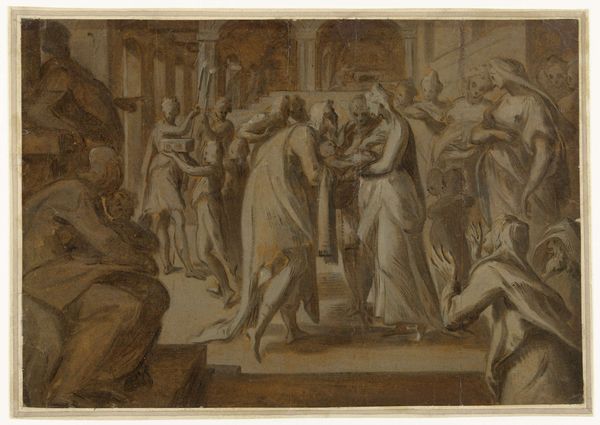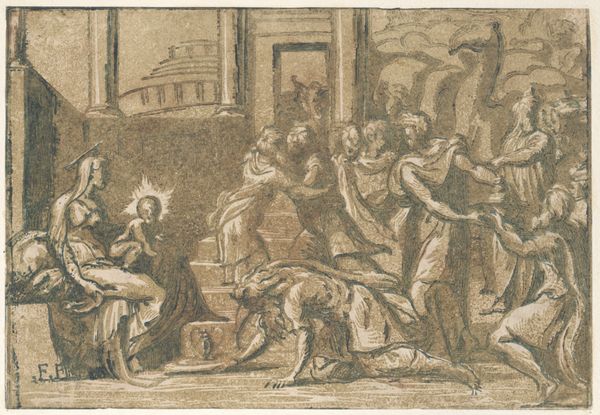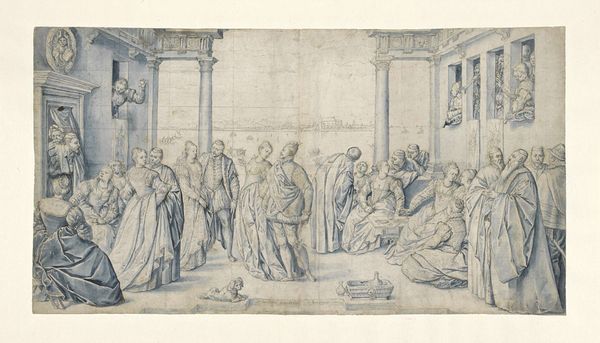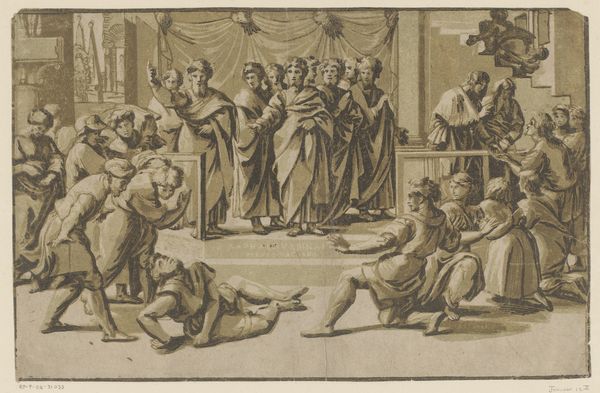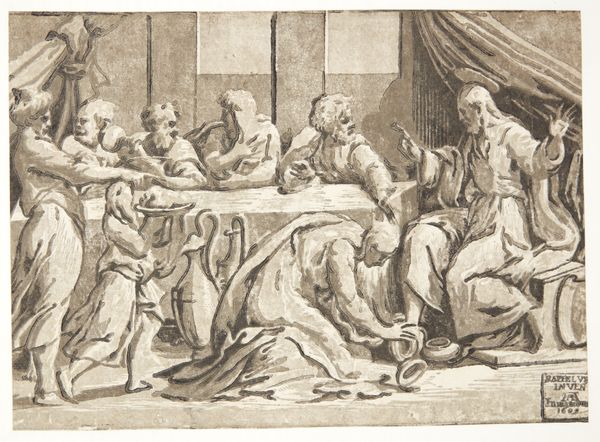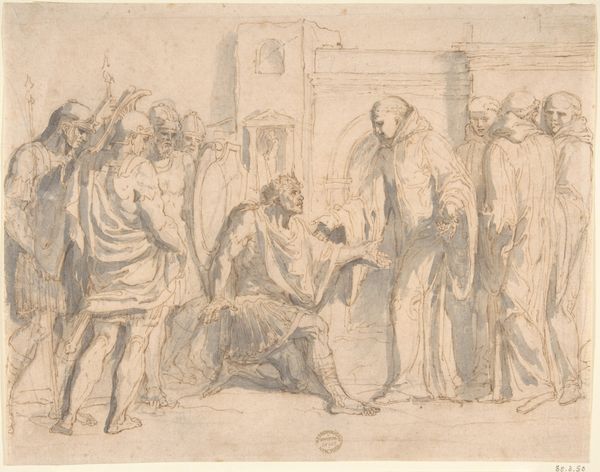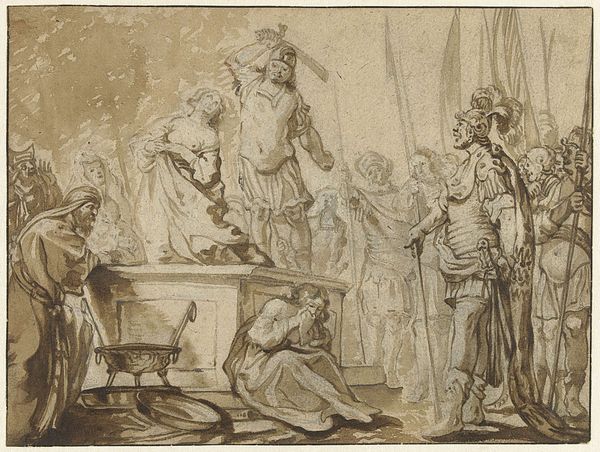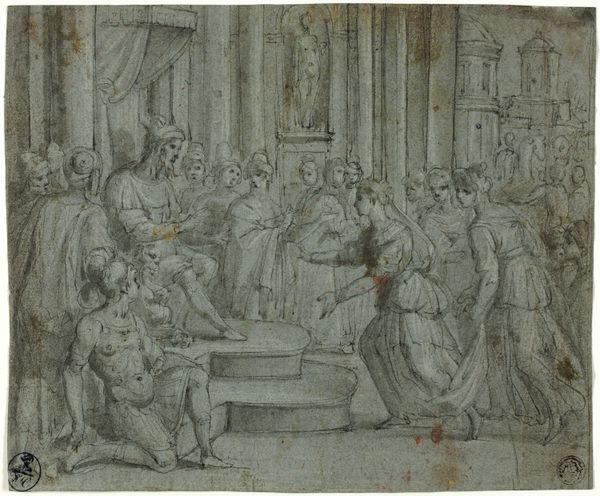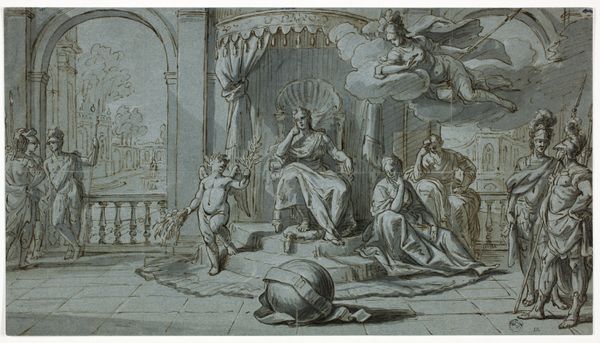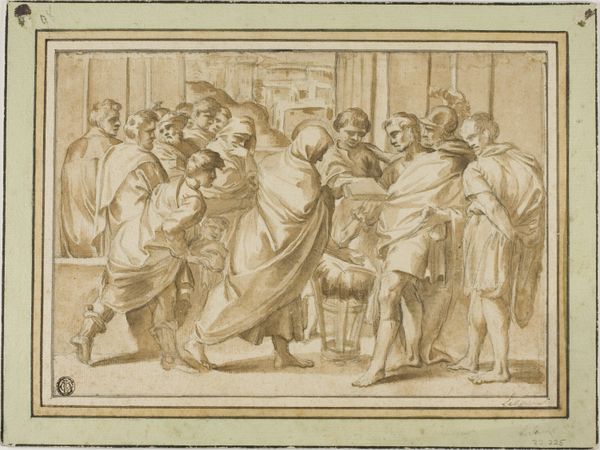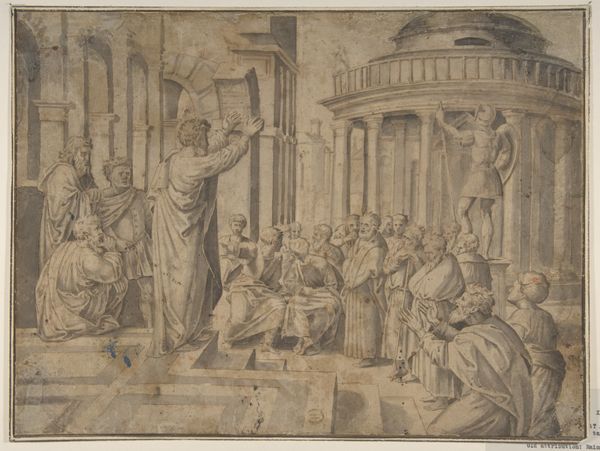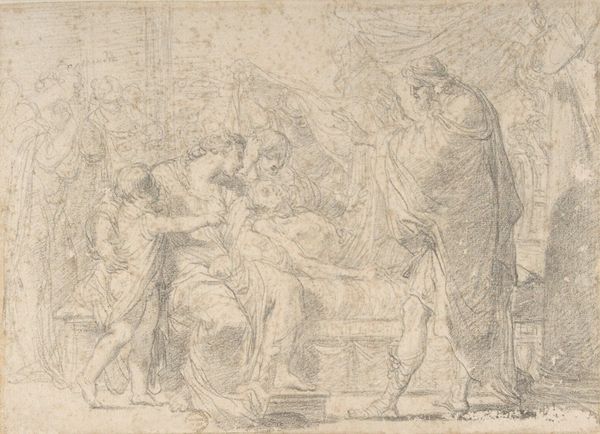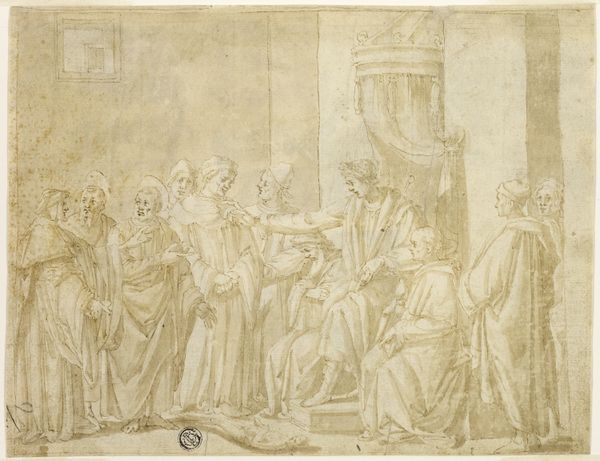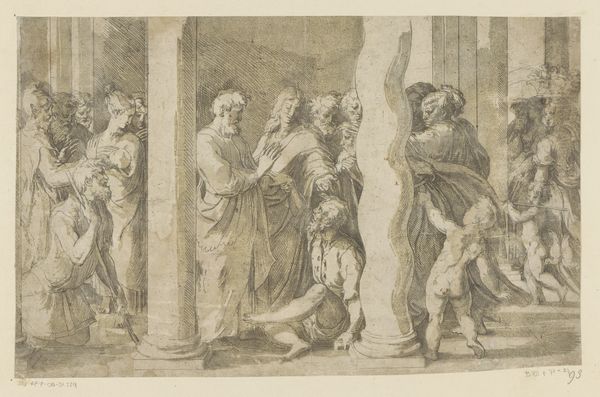
drawing, print, etching, ink
#
drawing
#
neoclacissism
#
narrative-art
# print
#
etching
#
death
#
figuration
#
ink
#
ink drawing experimentation
#
history-painting
Dimensions: 6 x 8 5/8 in. (15.3 x 21.9 cm.)
Copyright: Public Domain
Pierre Peyron’s ‘The Death of Seneca’ was executed in ink and wash on paper. This method, a departure from traditional oil paintings, evokes immediacy. The sepia ink and fluid washes yield a monochrome effect, lending an antique aura to the scene. The artist uses the ink to craft delicate lines, defining figures and architectural elements. The application of wash creates tonal variations, enhancing the drama of the moment. The process, rooted in drawing and printmaking, reflects the period's fascination with classical antiquity and its revival in the Neoclassical movement. The choice of paper as a support material is significant. Paper’s availability as a ground, unlike canvas, made artistic expression accessible beyond elite circles, connecting art-making to broader social spheres. The artist’s skill is evident in the manipulation of wash to create depth, texture, and emotional resonance. The material choice and mode of production emphasize the value of craft skills and the ability to capture a moment in history with sensitivity. It challenges the traditional distinctions between fine art and craft.
Comments
No comments
Be the first to comment and join the conversation on the ultimate creative platform.
